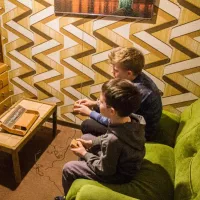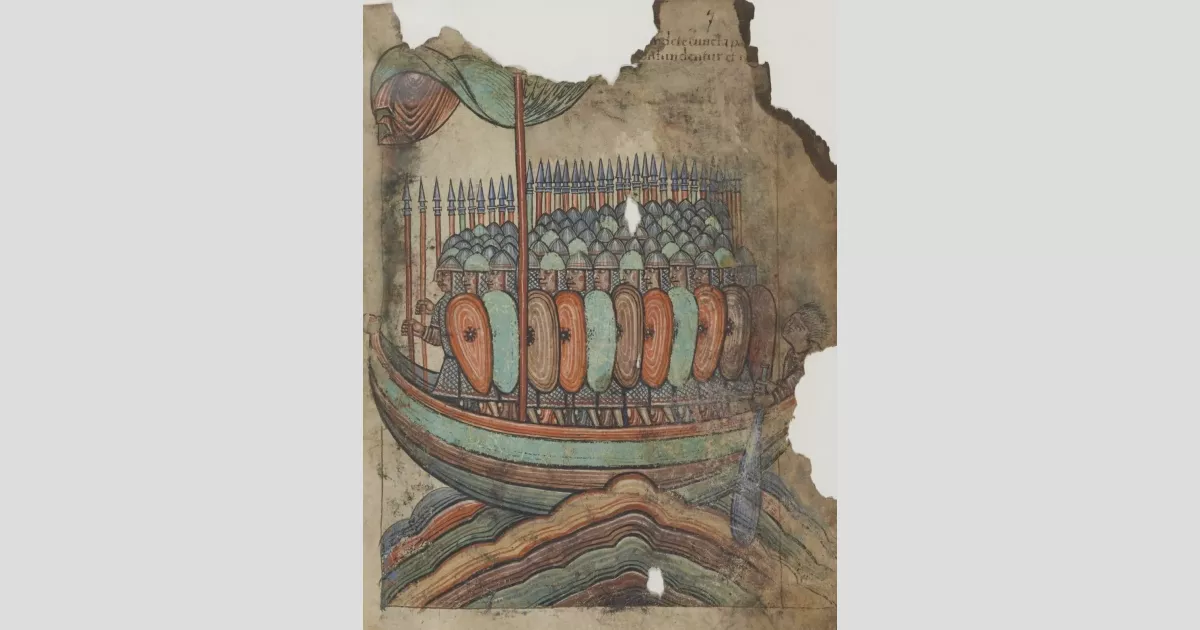The Vikings, originating from Scandinavia between the late 8th and late 11th centuries, were seafaring people known for raiding, piracy, trade, and settlement across Europe. Their voyages extended to the Mediterranean, North Africa, the Middle East, Greenland, and Vinland. The Viking Age significantly influenced early medieval history, impacting the political and social evolution of regions like England and France. Notably, they established the foundation for Russia through Kievan Rus'.
1929: Last known record of Elfdalian Runes
In 1929, the last known record of the Elfdalian Runes, a variant of the Dalecarlian runes found in Dalarna, was documented, marking the end of runic inscriptions in Älvdalen.
1962: Marvel Comics superhero Thor created
In 1962, Stan Lee, Larry Lieber, and Jack Kirby created Thor, the Marvel Comics superhero based on the Norse god.
1962: Discovery of Viking ships in Roskilde Fjord
In 1962, the remains of the Viking ship Skuldelev 2 and four others were discovered during an excavation in the Roskilde Fjord.
1963: Release of "The Long Ships" film
In 1963, the film "The Long Ships", based on Frans Gunnar Bengtsson's novel of the same name, was released, contributing to the Viking Revival's influence on creative works.
1993: Release of The Lost Vikings game
In 1993, the video game "The Lost Vikings" was released, showcasing Vikings as inspiration for video games.
1998: Snorri sails from Greenland to Newfoundland
In 1998, the Snorri, a Skuldelev I Knarr, was sailed from Greenland to Newfoundland.
2002: Release of Age of Mythology game
In 2002, the video game "Age of Mythology" was released, inspired by Viking culture and mythology.
2005: Tim Severin authors Viking novels
In 2005, British writer Tim Severin published a trilogy of novels about Thorgils Leifsson, a young Viking adventurer, contributing to the Viking influence in literature.
July 2007: Sea Stallion begins journey to Dublin
In July 2007, the reconstructed Viking ship Skuldelev 2, renamed Sea Stallion, began a journey from Roskilde to Dublin.
August 2007: Sea Stallion arrives in Dublin
In August 2007, the Sea Stallion arrived outside Dublin's Custom House after sailing from Roskilde.
2011: Release of The Elder Scrolls V: Skyrim game
In 2011, "The Elder Scrolls V: Skyrim", an action role-playing video game heavily inspired by Viking culture, was released.
2011: Marvel Studios film Thor released
In 2011, the Marvel Studios film "Thor", featuring the superhero character, was released.
2012: Thor appears in The Avengers film
In 2012, the character Thor appeared in the film "The Avengers" and its associated animated series.
2013: Premiere of History Channel's series Vikings
In 2013, the History Channel's series "Vikings", directed by Michael Hirst, premiered, contributing to a resurgence of Vikings in popular media.
2015: The Lost Vikings appear in Heroes of the Storm
In 2015, Erik the Swift, Baleog the Fierce, and Olaf the Stout from "The Lost Vikings" series appeared as playable heroes in "Heroes of the Storm".
2017: Release of For Honor game
In 2017, the video game "For Honor" was released, showcasing Vikings in a combat setting.
2019: Analysis suggests Viking warrior was Slav
In 2019, an analysis of a 10th-century grave of a female warrior in Denmark, previously thought to belong to a Viking, suggested that the woman may have been a Slav from present-day Poland.
2019: Archaeologists uncover Viking boat graves
In 2019, archaeologists uncovered two Viking boat graves in Gamla Uppsala, with one containing the remains of a man, a dog, and a horse, providing insights into Viking death rituals of the time.
2020: Release of Assassin's Creed Valhalla game
In 2020, "Assassin's Creed Valhalla" was released, focusing on the Viking invasion of Britain set in 873 AD.
2020: Analysis of Viking-era DNA shows relation to modern Scandinavians
In 2020, Margaryan et al. analyzed 442 Viking world individuals from various archaeological sites in Europe, finding them to be closely related to modern Scandinavians and demonstrating intermarriage with foreign women.
2020: Examination of elite warrior burial from Bodzia
In 2020, Margaryan et al. examined an elite warrior burial from Bodzia (Poland), dated to 1010–1020 AD, suggesting a link to the Prince of Kiev, Sviatopolk the Accursed.
Mentioned in this timeline

Stan Lee was a pivotal figure in the comic book...
Marvel Comics founded in as Timely Comics by Martin Goodman...

Books are a means of storing information as text or...

The horse scientifically known as Equus ferus caballus is a...
Poland officially the Republic of Poland is a Central European...

A video game is an electronic game involving user interaction...
Trending

1 month ago Lake Tahoe: Service Roads Closure, Heavenly Village Ice Rink Opens with Bear!

2 months ago Pat McAfee's Hilarious Halloween Costume: Cowher Reacts to 'Old Sports Media Man'
6 months ago Indian Regulator Bars Jane Street From Securities Market, Orders Disgorgement of ?4,844 Crore.

13 days ago Nick Saban and Lane Kiffin's Debate: Kiffin's LSU Move and Economic Impact

8 months ago Steve Kerr Addresses Jonathan Kuminga's Fit Within the Warriors After OT Loss.
7 months ago Trump Announces US to Remove Sanctions on Syria During Middle East Tour
Popular

Candace Owens is an American conservative political commentator and author...

Tucker Carlson is an American conservative political commentator known for...

XXXTentacion born Jahseh Dwayne Ricardo Onfroy was a controversial yet...

Ilhan Omar is an American politician currently serving as the...

Kashyap Pramod Patel is an American lawyer who became the...

Bill Gates an American businessman and philanthropist revolutionized personal computing...
